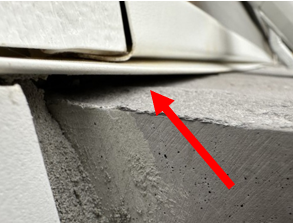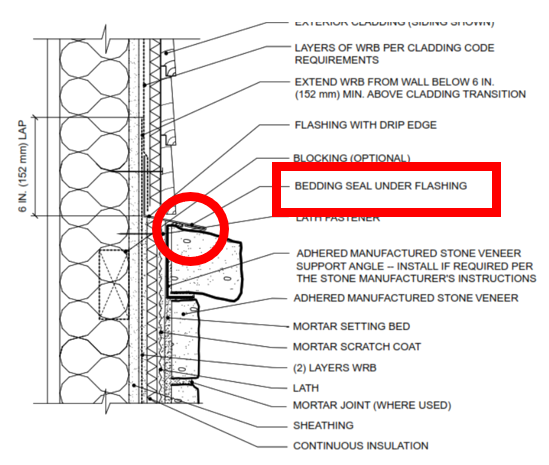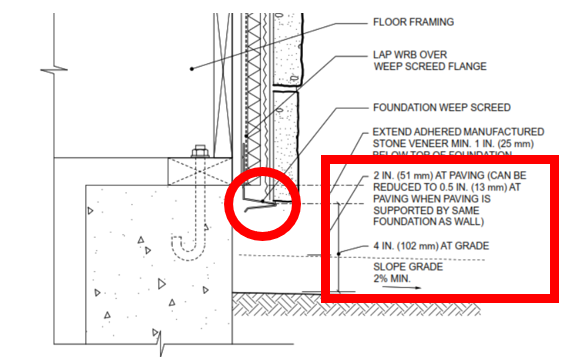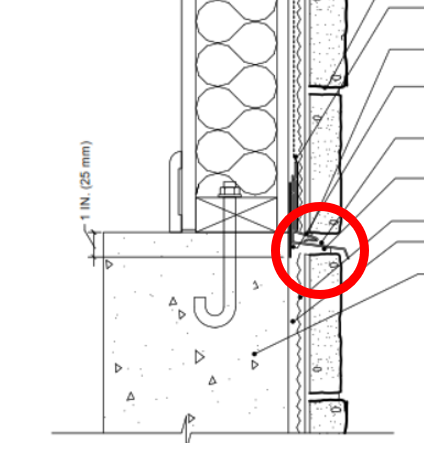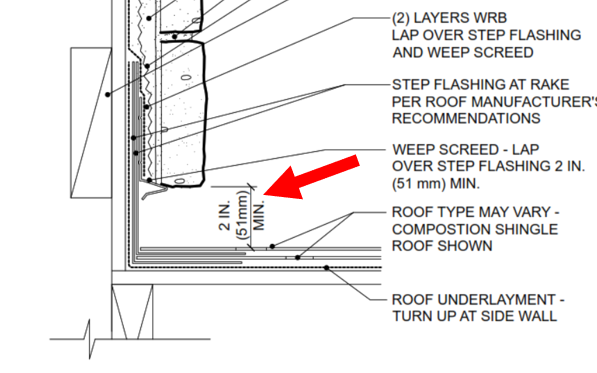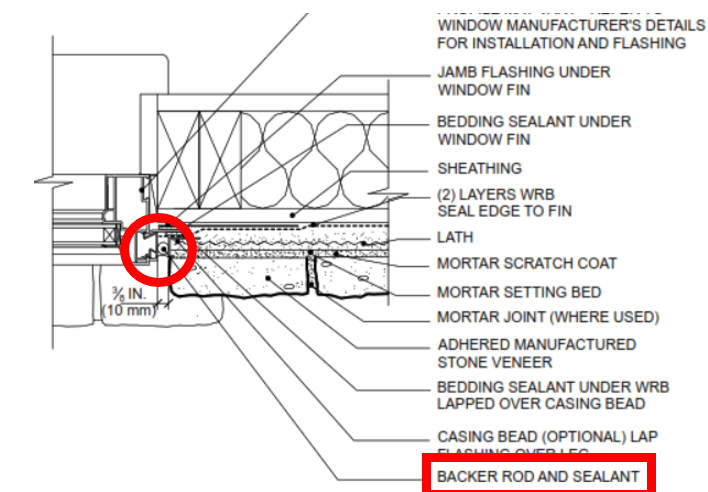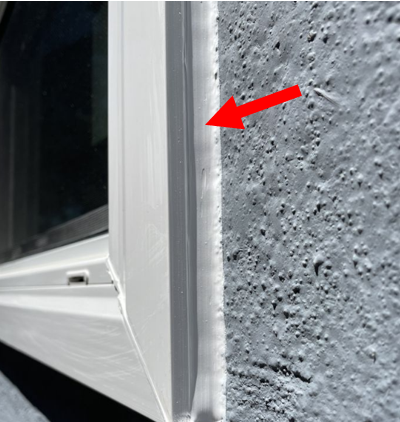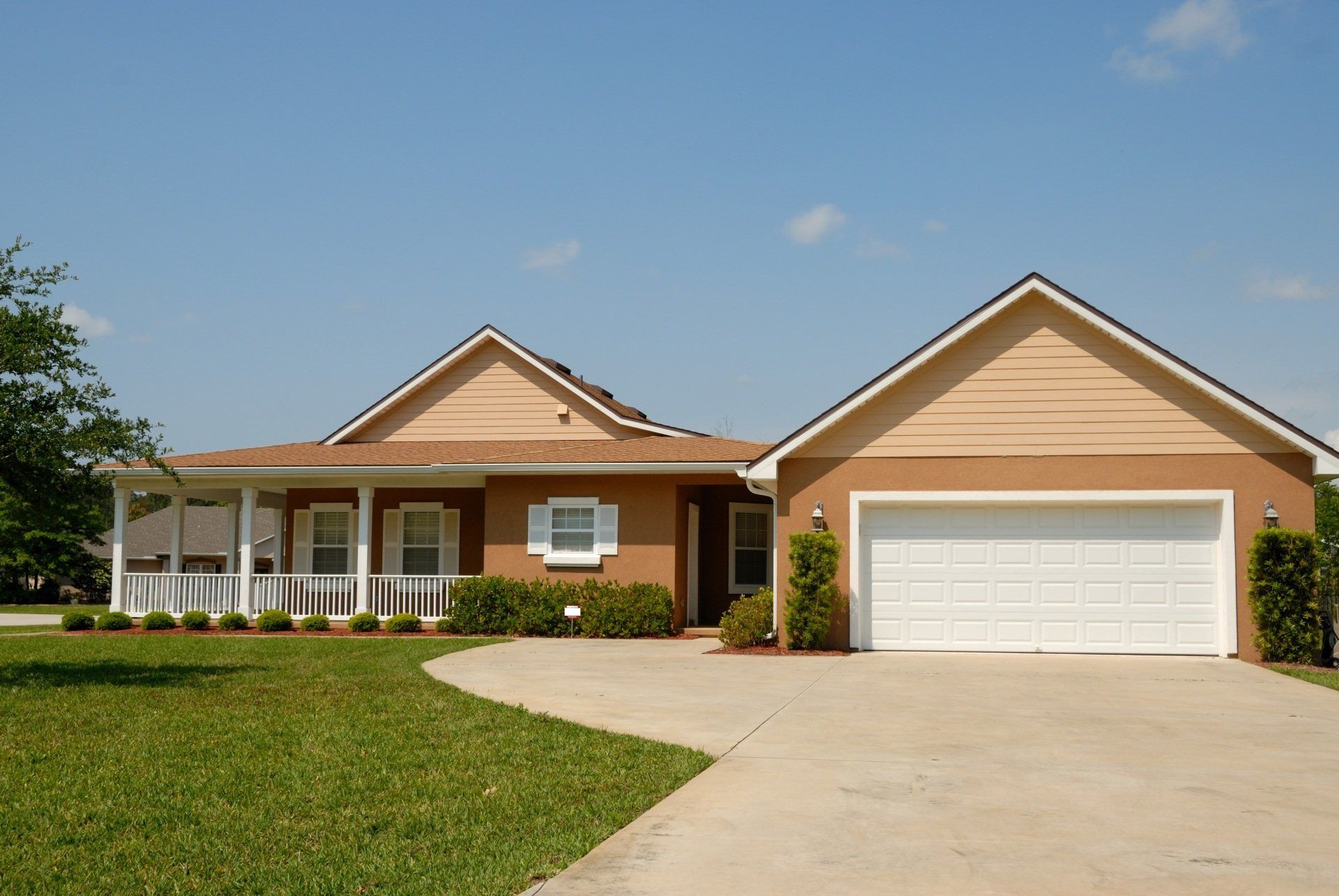Adhered Masonry Stone Veneer (also known as AMSV) is a product used on many newer (say, the past 30 years or so) homes in our area, although it is rarely properly installed based upon my experience. I’ve inspected lots of newly constructed homes for buyers just in the past 5 years and have not seen a proper AMSV installation yet.
In 2009, guidelines from the Masonry Veneer Manufacturers Association (MVMA) were introduced. Prior to that, only manufacturer installation guidelines really existed and those were often confusing to some installers, builders, home inspectors, and code officials. These guidelines were used to create a document considered the standard for AMSV installation, called
ASTM C1780: Standard Practice for Installation Methods for Adhered Manufactured Stone Masonry Veneer. Homes with stone veneer installed that were built prior to this time frame will generally only have the items shown below if they were repaired or otherwise modified later on after installation.
This ASTM document outlines how this product should be installed and includes many (48, to be exact) helpful diagrams to use as reference to show many different situations and locations on a home’s exterior where this product is to be installed.
Adhered Masonry Stone Veneer is often installed along the lower portion of a home’s front exterior (such as below another type of siding) or sometimes is installed to cover the entire front (or more) of a home. Sometimes the product is only installed over the exposed foundation and another siding product serves as the home’s exterior cladding from the sill plate upwards.
I’ve inspected nearly 80 homes in a new development in the area and repeatedly call out the same flaws for each home. In this case, it commonly relates to the lack of sealant below a piece of metal flashing that is installed where vinyl siding terminates on top of a stone ledge. The stone ledge serves as the top of the stone veneer (a transition, if you will) installed below it
These proper flashing and sealant details are important in order to help prevent water entry into an exterior wall where hidden rot and mold (and/or insect infestation) can then occur unbeknownst to the homeowner for a period of time.
This sealant is supposed to be installed to help prevent wind-driven rain from entering behind the stone veneer at this location. I either use a screw driver or my finger to check this area. For whatever reason, most builders do not perform this detail as required.
I’ve actually asked a few builders about this in the past. Each time, the reply was along the lines of ‘we’re hoping that the house wrap behind the veneer will catch and shed the water’.
I’ve also asked a code official who was doing a final inspection on a brand new home as I was performing the buyer’s home inspection. His reply was that he was ‘not too familiar with the requirements’ and that ‘it’s up to the product manufacturer to tell the builder how to install the product’. The lack of following proper guidelines and the lack of knowledge of the installers and code officials is a good re-enforcement of why buyers of even brand new homes should always get their new home inspection performed.
Another related issue that I run across pertaining to AMSV deals with how these products are terminated along grade, roofs, windows/doors, and flat hard surfaces. Improper installation at these areas can prevent proper drainage from the AMSV and can allow for the absorption of water into the exterior wall structure.
-Copyright © Improper Stone Veneer Installation Practices, Matthew Steger, ACI, 2024. All Rights Reserved.
Facts, opinions and information expressed in the Blog represent the work of the author and are believed to be accurate, but are not guaranteed. The Lancaster County Association of Realtors is not liable for any potential errors, omissions or outdated information. If errors are noted within a post, please notify the Association. Posts represent the author's opinion and are not necessarily the opinion of the Association.





